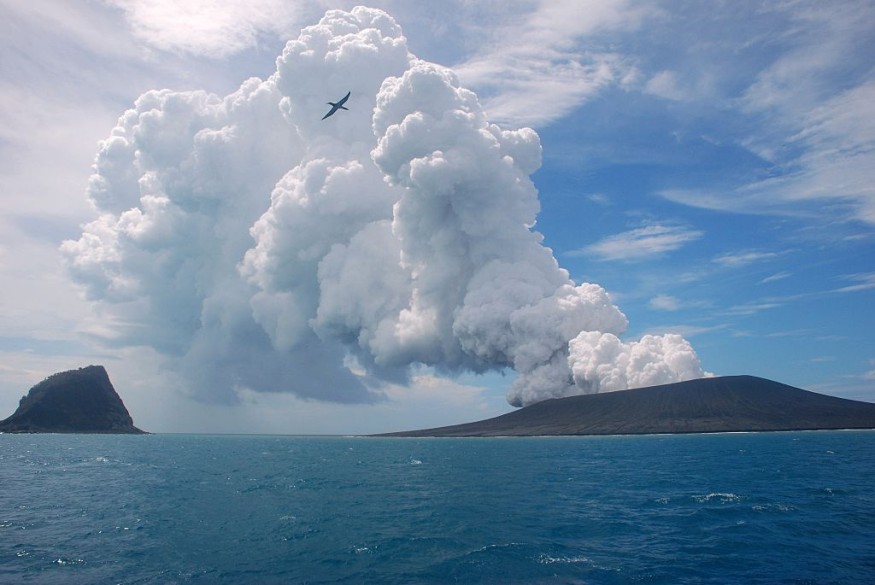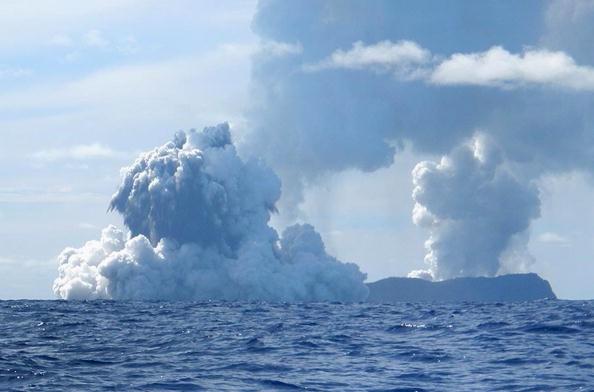On Saturday, Tonga's Hunga Tonga-Hunga Ha'apai volcano erupted in its most intense eruption since AD 1100. The repercussions have been felt worldwide, and the extent of the damage is still being analyzed.

At 5:10 p.m. local time on January 15, the volcano, which is roughly 65 kilometers north of the capital of Tonga, Nuku'alofa, erupted violently. A mushroom cloud of ash bursting 30 kilometers high and reaching over 3000 kilometers west of Australia can be seen on satellite pictures.
Scientists reviewing satellite photographs and looking to the past to anticipate the future of the isolated region warn that Tonga's enormous undersea volcanic eruption might cause long-term harm to coral reefs, eroding coasts, and disrupt fisheries.
Intense Acid Rain
Since the first eruption, the volcano has been emitting sulfur dioxide and nitrogen oxide - two chemicals that react with water and oxygen in the atmosphere to produce acid rain.
"There is likely to be acid rain surrounding Tonga for a time to come," according to University of Auckland volcanologist Shane Cronin.
Tongan staples, including taro, corn, bananas, and garden vegetables, might be destroyed by acid rain, which causes significant agricultural damage. "Food security might be jeopardized depending on how long the eruptions occur," Cronin added.
The plume expands westward according to satellite photos, indicating that Tonga may be spared a part of the acid rain, but Fiji may be caught in its path.
Earlier this week, the United Nations issued a notice titled Fiji's humanitarian affairs office stating the country's air quality was being monitored. In the case of rain, residents should cover their water tanks and stay indoors.
Dying Fishes

The exclusive economic zone of Tonga, which covers about 700,000 square kilometers (270,271 square miles), is 1,000 times the size of the country's land area. The majority of Tongans rely on the ocean for their food and livelihood.
"The few photographs that are available seem to depict a blanket... on the ground," according to scientists who have yet to investigate on the ground. Marco Brenna, a geologist at the University of Otago in New Zealand, stated "of ash" on land.
That ash can be detrimental to marine creatures in the water. Tonga Geological Services warned fishermen weeks before Saturday's eruption that local saltwater was tainted with toxic volcanic discharge and that "fish in these seas are poisoned or deadly," according to Tonga Geological Services.
The issue has only become worse as a result of the eruption. Fish will be starved of food, and reproductive grounds will be wiped out by ash-filled water near the volcano. According to experts, some fish will die, and those that survive will be compelled to move. Fishing vessels may face additional challenges if the sea floor's structure changes in the future.
As Brenna pointed out, "it will be a while until the same or new fishing spots are recovered."
Coral Destruction
In Tonga, coral reefs are the backbone of a tourism business that brought in up to $5 million per year before the coronavirus outbreak, can also be smothered by falling ash.
Tonga's reefs have been endangered by disease outbreaks and the consequences of climate change, such as coral bleaching and stronger cyclones, even before the eruption.
According to Tom Schils, a marine biologist at the University of Guam who has researched volcanic eruptions and corals in the Northern Mariana Islands, "huge portions of the reefs in the immediate impact region at Hunga Tonga are presumably buried and drowned by massive quantities of volcanic ash."
In addition, such eruptions can increase the growth of blue-green algae and sponges, further destroying reefs by releasing more iron into the sea.
According to Brian Zgliczynski, a coral reef scientist at the Scripps Institution of Oceanography, the process of starting afresh might take years. The hard corals and fish will arrive; first, he added, while the more tolerant species of poor water quality would take longer to return.
Coastal Erosion

Tonga's capacity to deal with rising floods and storm surges would be harmed if coral reefs disappeared. This is a problem for Tonga, where sea levels are rising at a rate of roughly 6 millimeters (0.2 inches) each year, which is double the world average.
Tonga's natural storm buffers, including coral reefs, coastal seagrasses, and mangroves, were evaluated at $11 million per year in a 2015 assessment.
A Tongan sea level monitor registered a tsunami wave of 1.19 meters (almost four feet) before it ceased reporting after the last explosion. Tsunamis have been known to erode the coastline at a quick rate. Videos revealed damage to artificial seawalls before communication systems went down.
"The tsunami waves might have a significant impact on coastal defenses and reclaimed land, making the islands more susceptible," Cronin warned.
For similar news, don't forget to follow Nature World News!
© 2026 NatureWorldNews.com All rights reserved. Do not reproduce without permission.





